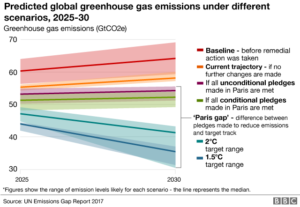Babcock Ranch – The First Solar City in the United States by Tim Rumage
I have long believed that our electricity supply system had a vitamin D deficiency. We were not getting enough sunlight into the equation.
I’m well versed in both the potential and viability of solar energy, and the promise of sustainability. I’m also an advocate of Buckminster Fuller’s design philosophy and a disciple of Ian McHarg’s “Design with Nature.”
Just a few days ago I saw all those concepts and solutions become manifest at Babcock Ranch, Florida. Babcock Ranch is the best example of experiential design for real-life daily-living anywhere that I know of.
Imagine a community integrated into a nature preserve with 50 miles of hiking and biking trails. From home you can easily walk to town, to a trailhead or to a series of lakes. The town is complete with schools and health care facilities as well as community gardens, a five acre farm and a seasonally/locally sourced farm to table restaurant. And it is all solar powered… and all homes include one Gbps Wi-Fi.
The most amazing part is… you don’t have to imagine it. You can go see it, visit it, or even buy a home and move in.
Working with Florida Power and Light, Babcock Ranch runs off a 400 acre, 74.5-megawatt solar array that provides enough energy for the town at build out (50,000 people) plus neighboring customers. A 10-megawatt energy storage system will soon be installed, and a second 74.5-megawatt solar array is under construction to expand solar power availability to the region.
I think they should put up a sign at the entrance to Babcock Ranch that says “Your dependence on fossil fuels ends when you enter here.” Mass transit in Babcock Ranch, in case you don’t want to walk or bike, is provided via solar powered electric autonomous vehicles.
Stewardship of Babcock Ranch extends well beyond its use of solar energy. Existing wetlands have all been preserved in place and in function. A rain garden has been added to the system to mitigate and treat storm water coming off the roads. The forests are professionally managed with prescribed burns and selective cuttings. Cattle are still grazed, watermelons still grown, streams and stream habitats are well maintained. Endangered species habitat has been enhanced, and commercial bee hives assist with pollination and to produce honey.
The building code ensures that homes are weather/climate appropriate, well insulated and energy efficient. The plant palette for home/community landscapes relies heavily on native plants, and includes restrictions on both the amount of area devoted to lawns and the types of grass that can be used. There are also set-asides for existing native trees. When native trees are in the way of construction, they are not bulldozed, but are transplanted in new locations on the property.
Babcock Ranch is a game-changer for new developments, urban expansion or redevelopments. It clearly demonstrates that cutting-edge sustainability can cost effectively be accomplished using progressive design and clean energy. As such, designing traditional fossil fuel dependent communities in the future will be seen as inefficient and short-sighted.
Babcock Ranch eliminates the excuse that solar power can’t work at city scale. In fact, their solar installation is designed to operate at city scale.
Solar power, autonomous vehicles, local food, and hiking trails; it’s like George Jetson living in a Nature Preserve. Who doesn’t want to live where the benefits of technological advancements helps ensure the natural and historic integrity of place?
Additional Information:
The first residents of Babcock Ranch are scheduled to move in early January 2018.
To get to Babcock Ranch, Florida take exit 143 off of I-75. Go east on State Road 78. At the junction of SR 78 with State Road 31, go North SR 31 to Crescent Loop. At Crescent Loop go East to the Town Center of Babcock Ranch. From I-75 to Crescent Loop is approximately 8.8 miles.




